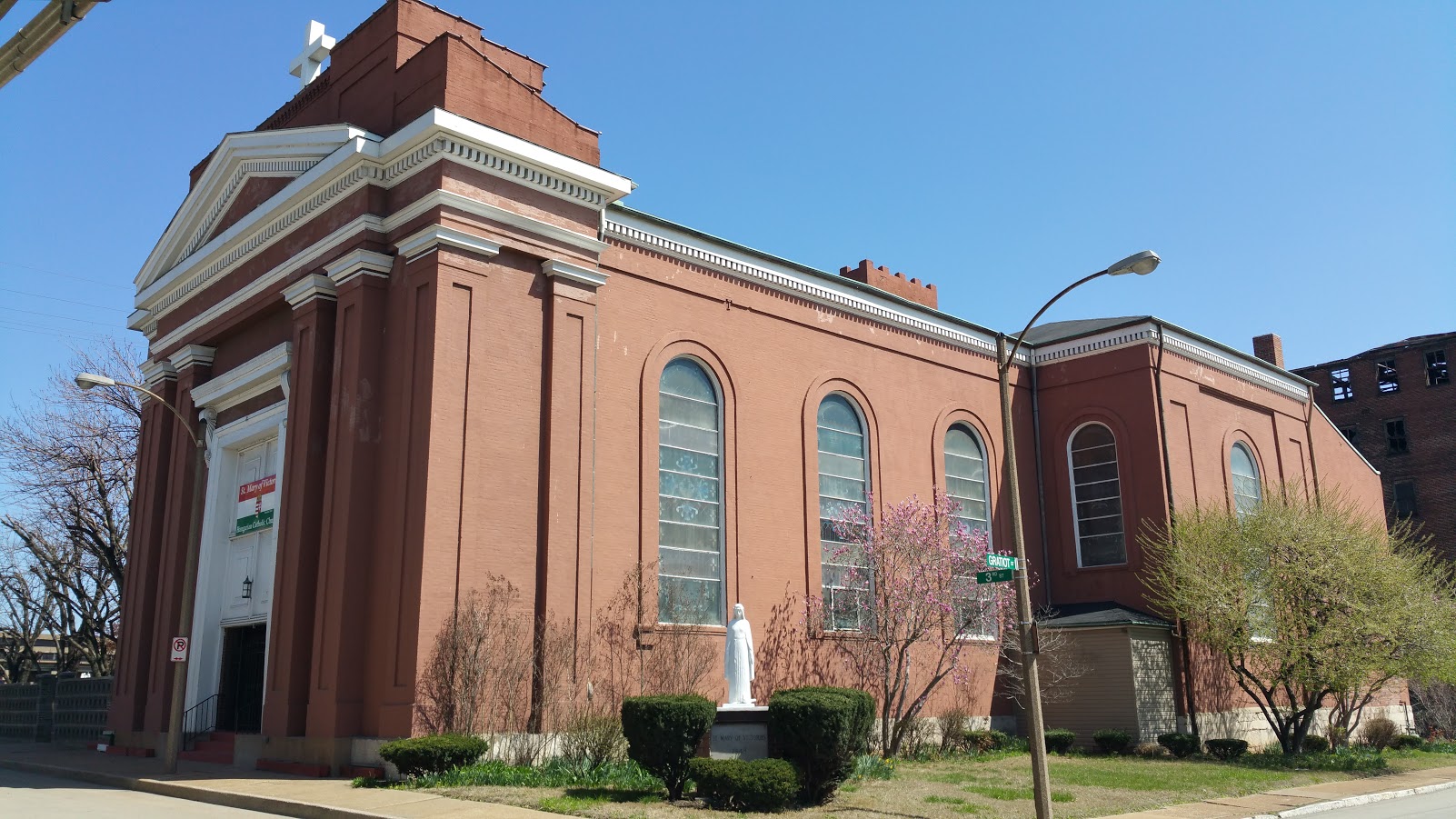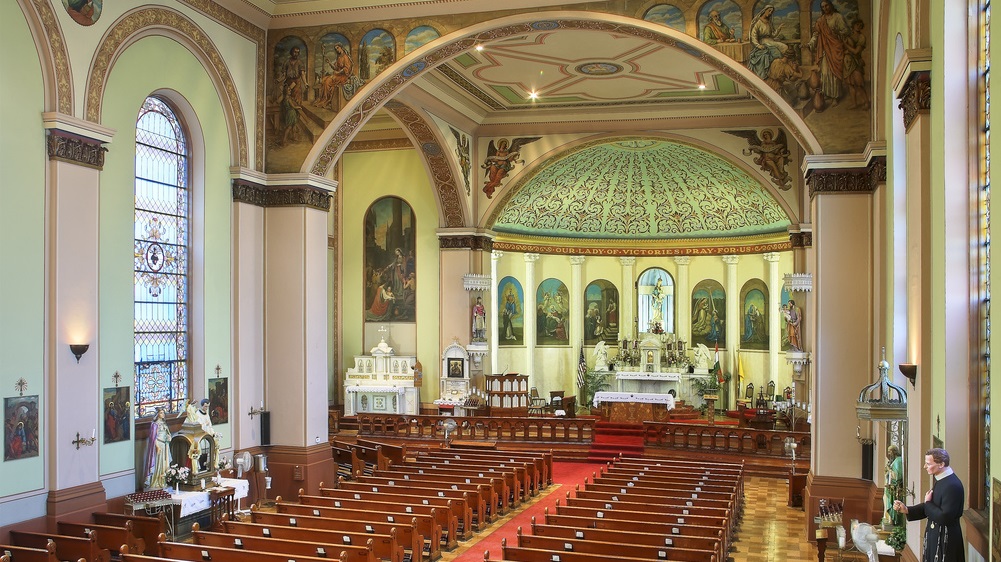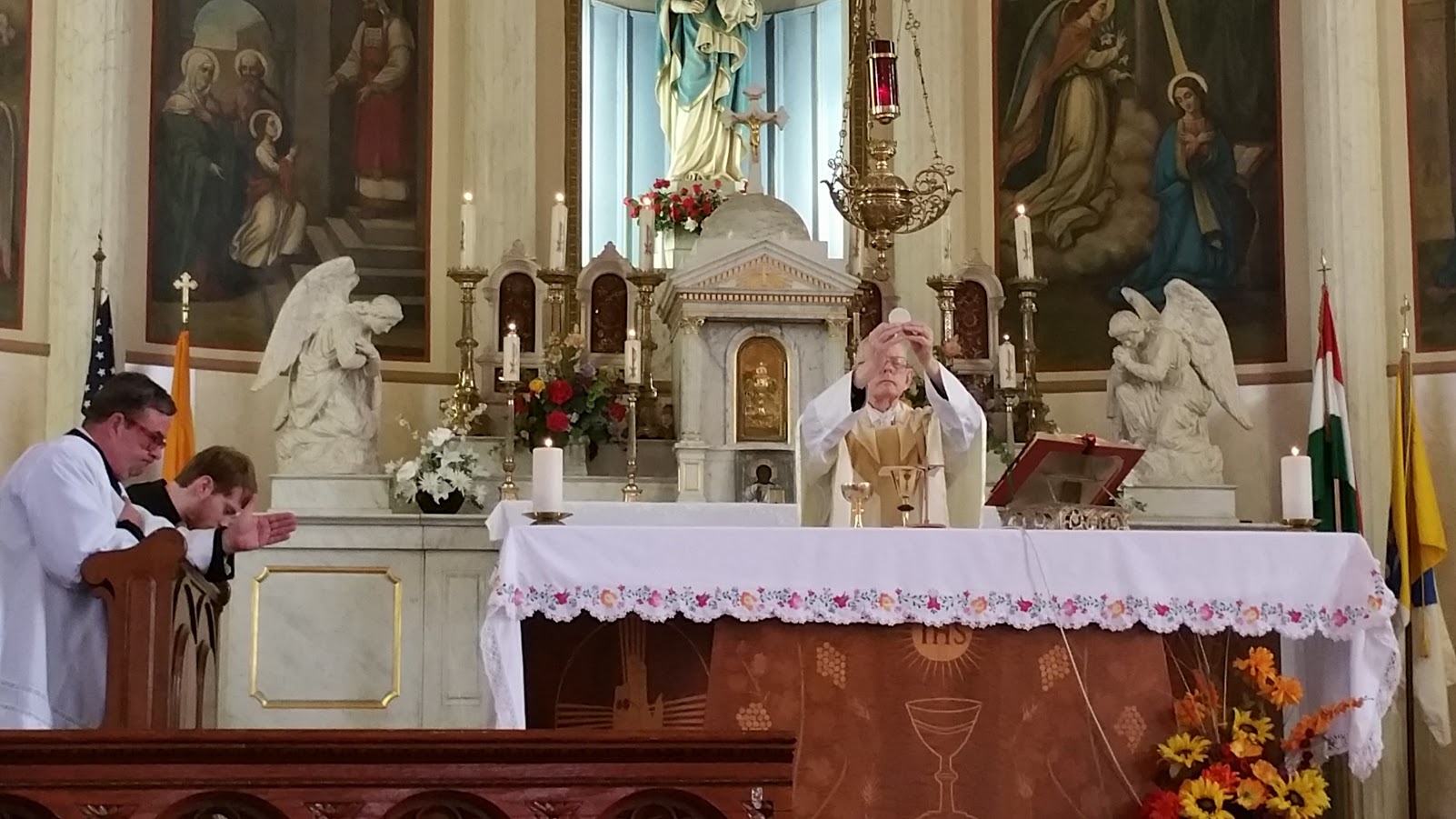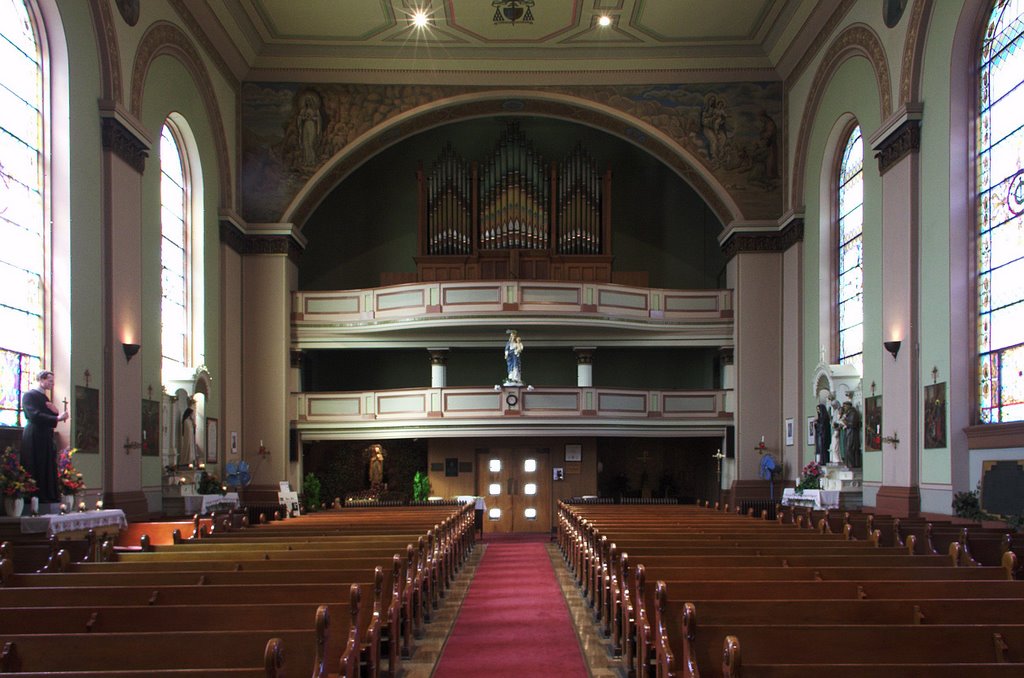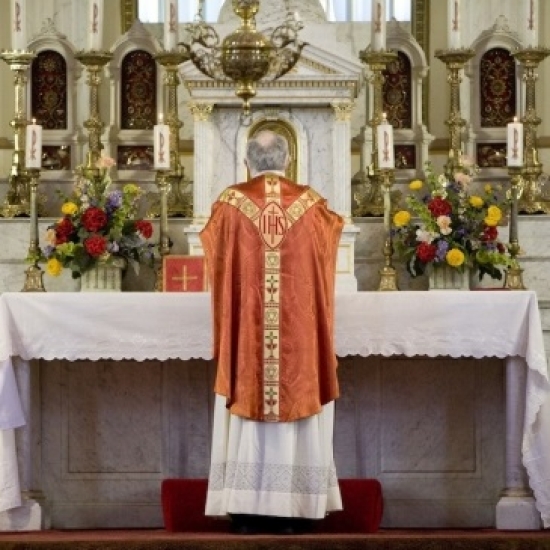Introit: Ecce Deus
Offertory: For the beauty of the earth, p. 207
Communion (Years A & B): Acceptabis
Recessional: All creatures of our God and King, p. 206
Mass XI, PBC p. 58. Credo III, PBC p. 77
The Introit antiphon has three phrases:
-
Ecce Deus adjuvat me, et Dominus susceptor est animae meae
-
averte mala inimicis meis
-
in veritate tua disperde illos, protector meus, Domine.
The clear theme is that we must not grow despondent in the face of life's challenges, for Ecce Deus adjuvat me—God is my helper. Ecce starts on the dominant of the mode, reflecting the dominant power of God. So the c over Deus is doubled and that Dominus in the second part of the first phrase is made emphatic by a fourth. The manuscripts indicate with special markings that the notes over Deus adjuvat me should be given a broad interpretation. So they rightly demand a solemn rendering of this passage to express our deeply rooted confidence. From the second phrase on (averte), a certain restlessness and apprehension becomes evident. Perhaps it is holy anger, calling for vengeance. Some relationship exists between the passages over mala and illos. But the manuscripts wish above all to emphasize the pressus over illos. Hence the bistropha with its succeeding clivis are here marked with 'c' (=celeriter, rapidly); or 'st' (=statim, immediately) is interpolated between the bistropha and the clivis, while in the corresponding passage over mala 't' (=tenere, hold) and an episema are placed over the clivis. The called-for acceleration of the neums which precede the pressus makes the latter stand forth prominently. Only with protector meus, which may be considered a prolongation of est animae meae, does the confidential feeling of the beginning return to the text and still more to the melody, which closes with well-known and pleasing seconds. More than once the effect of the melody is heightened by what we may call the "resolved" F-major scale.
Here the question is very pertinent: Is a Christian allowed to pray thus: averte mala—turn back the evils upon my enemies? If these words proceeded from personal hate, then indeed they would be unchristian, and such a prayer would never find acceptance in the sight of God. Even David refrained from laying hands upon Saul when the latter was powerless before him. But since God desires the salvation of our souls, the enemies of our souls are also the enemies of God, and for that reason are we allowed to beseech God to render His and our enemies harmless, and to let their efforts toward the destruction of souls and the kingdom of God come to naught. Has not God promised His help to those who approach Him with confidence? Hence we call upon His fidelity (veritate), on His goodness and love, and leave it entirely to His wisdom how He will supply us with help against our foes. If, however, there is question of the interior enemies of salvation, such as self-deceit, concupiscence, lust, and so forth, then these words lose their questionable character, and we are allowed to use them in serious and earnest prayer. When we have to deal with exterior dangers, such as ignorance and seduction, then we give averte mala its proper meaning by adding et in veritate tua disperde illos.
(Year A & B) The Communion antiphon has two phrases:
-
Acceptabis sacrificium justitiae
-
oblationes et holocausta super altare tuum, Domine
The determined and joyful beginning of the melody reflects the literal meaning of the Hebrew word underlying acceptabis: You take delight in. And God does indeed delight in the sacrifice which Christ offers in the person of the sacrificing priest, who often prays that the sacrifice we offer might be acceptable (acceptabile) to the Father. It is the sacrifice of justice, the fitting sacrifice, which Jesus Christ 'the Just' has offered; the sacrifice which has again reconciled the offended justice of God. It is in truth a burnt offering in which the love of Christ to the Father consumed itself; a holocaust, since Christ Himself was unable to give more. To this sublime sacrifice, which is now offered on the altar (how pensive the melody becomes here!), are added our sacrificial gifts (oblationes): all renunciations, all sufferings courageously borne, all persevering performance of our duty we have placed on the paten and in the chalice. Taken up into Christ's oblation, as the drop of water into the wine at the Offertory, and united with Christ's sacrifice, these gifts find acceptance before the Lord.
This Communion, like many others, imitates the structure of the responsories. The cadence over justitiae is typical in responsories of the fourth mode. No doubt its close on e-f and not f-e (as in Domine) is employed to smooth the union of the first and second phrases. This cadence has also appeared over Acceptabis in a shortened form. Here the concluding e-f is found for the same reason as above. The member which immediately follows begins with d and an interval of a fourth, just as the second period is always introduced in the responsories of the fourth mode. The second phrase is more quiet, with a strong accent on f. Only with the expressive altare is any prolongation noticeable. The presentation should be lively and joyful.
